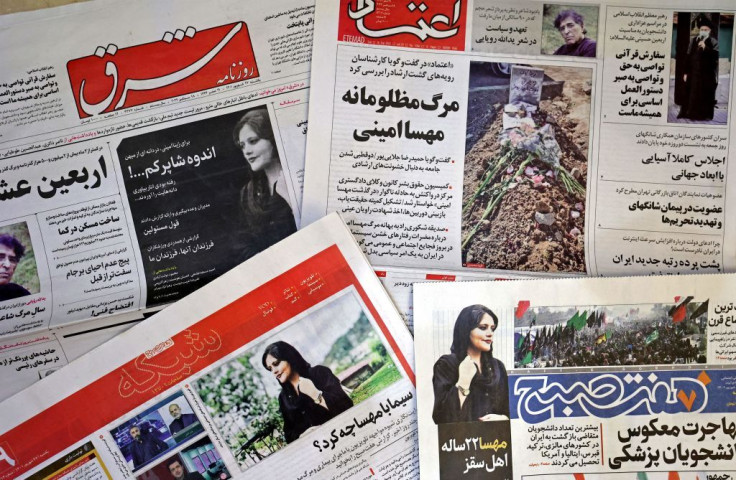Mahsa Amini, 22, was declared brain dead just hours after reports spread that she was beaten and arrested by morality police in Tehran for not complying with the country's mandatory hijab rules in Tehran on Friday.
Amini had traveled from the western Iranian province of Kurdistan to Tehran to meet relatives when she was arrested on Tuesday, reported RadioFreeEurope. According to eyewitnesses, she appeared to have been beaten inside the morality police van while being taken to the detention center. However, the media center of the Tehran Police Department denied eyewitness claims, saying she "suddenly suffered a heart problem."
Amini’s mother on the other hand told the BBC, 'They killed my angel” and added that her daughter was healthy and deviod of any problems. The deceased's brother, Kiarash Amini, told in an interview with Iranwire that he was with Amini when she was abducted after a morality patrol van blocked their way before officers grabbed Mahsa and forced her inside the vehicle.
The young man alleged that the morality police, known as Gasht-e Ershad, told him that they would release Mahsa within an hour after a so-called "re-education class" for "improper hijab", but he heard screaming when he got to the building. Kiarash claimed some of the detained women fled, and confirmed his fears. "Every one of them said somebody inside had been killed," he said.
The interior ministry and Tehran's prosecutor has now launched probes into the incident after a call by President Ebrahim Raisi, state media reported. Soon after Amini's death, women showed their anger on social media by posting other examples of heavy-handed action by morality police against women without hijab.
Looking at the situation, interior minister Ahmad Vahidi said he has asked his deputy to follow the case and find out what had happened. “I ask people who are talking about the incident to wait until everything becomes clear,' he told state TV.
According to multiple reports, Iran's morality police also known as the Guidance Patrols have become increasingly active and violent in Islamic state. The hijab or the head covering worn by Muslim women became compulsory in public for Iranian women and girls over the age of nine years after the Islamic Revolution in 1979.

© 2025 Latin Times. All rights reserved. Do not reproduce without permission.





